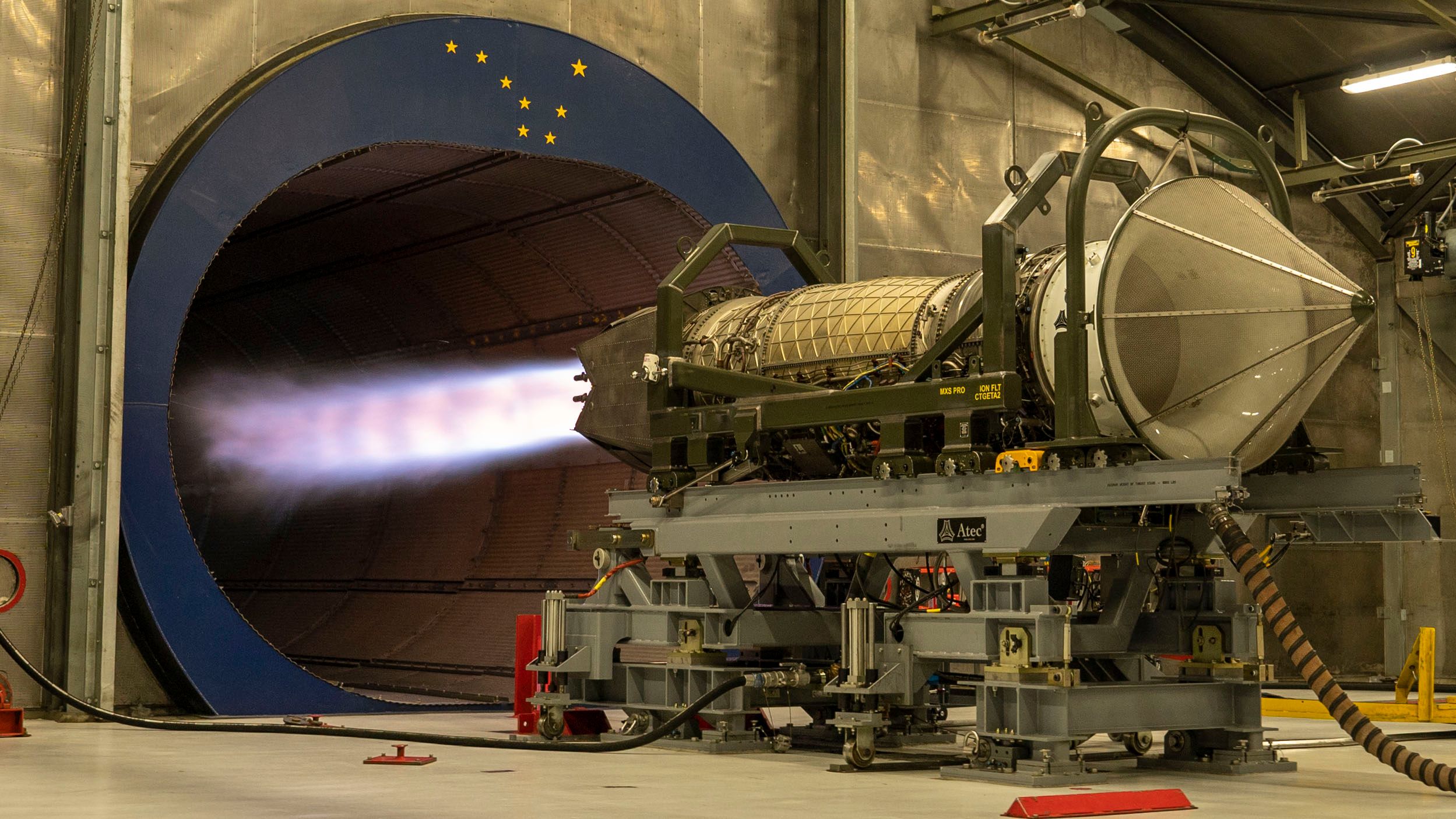SOURCE: AFI

The Indian Air Force (IAF) has tasked the Gas Turbine Research Establishment (GTRE) with developing a new engine for the Advanced Medium Combat Aircraft (AMCA), India’s ambitious fifth-generation stealth fighter. The IAF’s specific requirement is for an engine capable of delivering supercruise—a sustained supersonic flight without afterburners—at an altitude of 12 kilometers (H=12 km), a speed of Mach 1.3, and a dry thrust of 72 kN. This move underscores India’s determination to equip the AMCA with cutting-edge technology, aligning it with global benchmarks for fifth-generation fighters. However, the question remains: Is supercruise a universally desired criterion for modern fighter jets, and how does it stack up among existing fifth-generation platforms?
Supercruise, the ability to maintain supersonic speeds without the fuel-guzzling afterburner, offers significant tactical advantages. It enhances fuel efficiency, extends combat range, and reduces the infrared signature, making the aircraft harder to detect. For the AMCA, achieving supercruise at Mach 1.3 (approximately 1,600 km/h at 12 km altitude) with a dry thrust of 72 kN would provide a strategic edge, particularly in India’s challenging operational environment, where high-altitude performance is critical. The IAF’s focus on this capability reflects its intent to ensure the AMCA can penetrate contested airspace and engage adversaries effectively while maintaining stealth and endurance.
The development of this engine poses a formidable challenge for GTRE, which has faced hurdles with past projects like the Kaveri engine. The AMCA, currently in its prototype phase, is initially slated to use General Electric F414 engines (98 kN with afterburner), but these lack the dry thrust needed for supercruise. The IAF’s directive to GTRE signals a push for an indigenous solution, potentially a 110 kN-class engine with a dry thrust exceeding 75 kN, to meet the supercruise goal. This aligns with India’s broader “Make in India” initiative, though collaboration with foreign partners like Rolls-Royce or Safran remains a possibility to accelerate progress.
Supercruise in Fifth-Generation Fighters: A Global Perspective
Supercruise is often touted as a hallmark of fifth-generation fighters, but its implementation varies across operational platforms. Let’s examine which of the current fifth-generation jets boast this capability:
- Lockheed Martin F-22 Raptor (United States)
The F-22 is the gold standard for supercruise, capable of sustaining speeds above Mach 1.5 (approximately 1,850 km/h) without afterburners. Powered by two Pratt & Whitney F119 engines, each delivering 35,000 lbf (156 kN) of thrust with afterburners and a classified dry thrust (estimated at 26,000 lbf or 116 kN), the Raptor’s design prioritizes air superiority. Its supercruise ability allows it to outpace adversaries while conserving fuel, a feature honed during the U.S. Advanced Tactical Fighter program. - Lockheed Martin F-35 Lightning II (United States)
Unlike its sibling, the F-35 does not possess supercruise capability. Powered by a single Pratt & Whitney F135 engine (43,000 lbf or 191 kN with afterburner, 28,000 lbf or 125 kN dry), the F-35 prioritizes stealth, sensor fusion, and multirole versatility over sustained supersonic performance. It can briefly exceed Mach 1 without afterburners but lacks the endurance to qualify as a supercruising jet, reflecting a design trade-off for broader mission flexibility. - Chengdu J-20 (China)
The J-20’s supercruise status remains debated. Early models used Russian AL-31F engines (135 kN with afterburner), which did not support supercruise. The newer WS-10C variant reportedly enables limited supercruise, possibly around Mach 1.2, though official confirmation is lacking. China claims the WS-15 engine (180 kN with afterburner) will fully enable supercruise, but it’s not yet operational. The J-20’s capability thus appears aspirational rather than proven. - Sukhoi Su-57 (Russia)
The Su-57 can supercruise with its interim AL-41F1 engines (147 kN with afterburner), reportedly achieving Mach 1.3 without afterburners. The planned Izdeliye 30 engine (171 kN with afterburner) aims to enhance this to Mach 1.5 or higher. While less stealth-focused than Western counterparts, the Su-57 leverages supercruise for rapid response and kinematic advantage, though production delays have limited its deployment. - Shenyang J-31/FC-31 (China)
Still in development, the J-31 uses WS-13 engines (100 kN with afterburner) and lacks supercruise in its current form. Future upgrades with WS-19 engines may aim for this capability, but as a lighter, export-oriented jet, it’s not yet a fully operational fifth-generation platform.
Is Supercruise a Universal Criterion?
While supercruise is a prized feature, it’s not a universal requirement for fifth-generation fighters. The F-22 and Su-57 emphasize it for air dominance, leveraging high-speed intercepts and evasion. Conversely, the F-35 sacrifices supercruise for stealth, payload, and networked warfare, reflecting a shift toward multirole operations in contested environments. China’s J-20 and J-31 suggest an evolving commitment to supercruise, but their reliance on engine upgrades highlights technological gaps.
For the IAF, supercruise aligns with the AMCA’s role as a stealthy air superiority platform, complementing its planned stealth and sensor fusion capabilities. However, achieving it at Mach 1.3 with 72 kN dry thrust at 12 km is ambitious—comparable jets require significantly higher thrust (e.g., F-22’s 116 kN dry). This could necessitate a larger engine, impacting stealth and weight, a trade-off GTRE must navigate.
NOTE: AFI is a proud outsourced content creator partner of IDRW.ORG. All content created by AFI is the sole property of AFI and is protected by copyright. AFI takes copyright infringement seriously and will pursue all legal options available to protect its content.